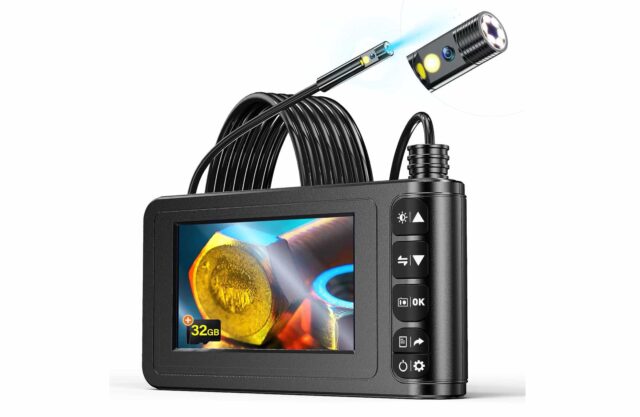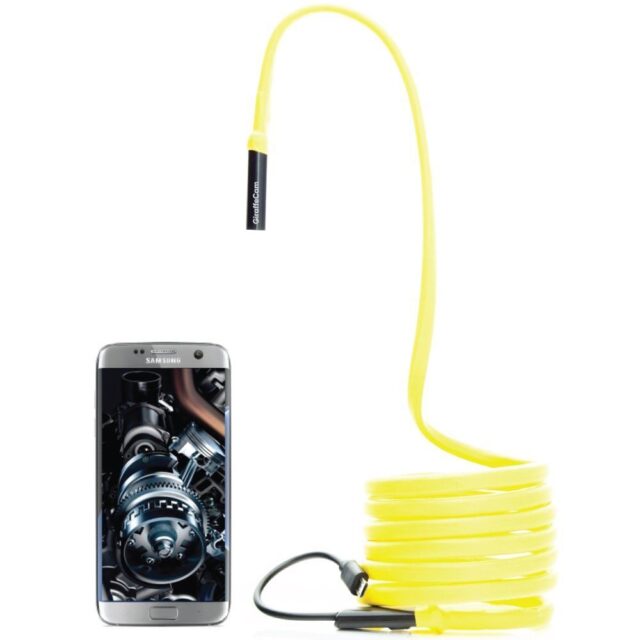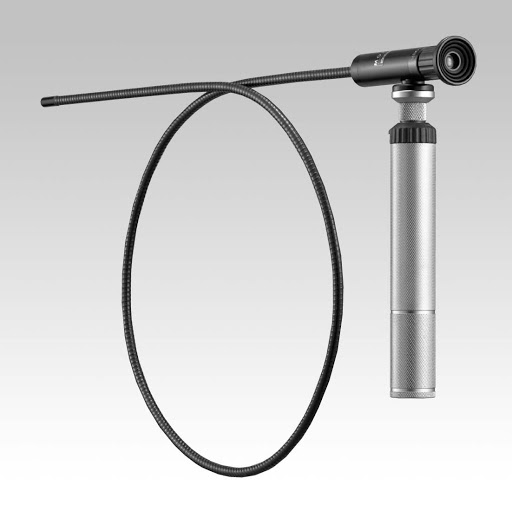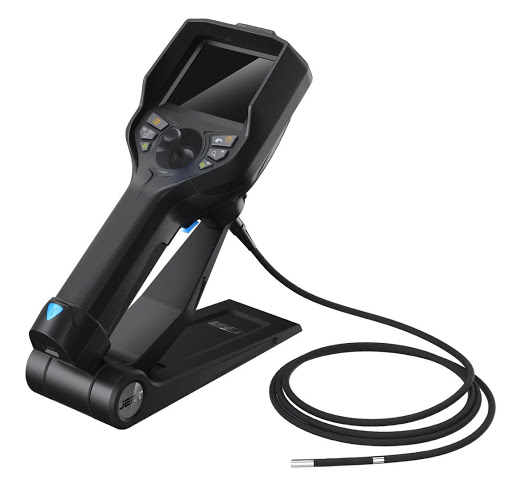
In the modern-day industry, we have a plethora of highly complex machines and devices, composed of thousands of really small parts essential to the machine. With that in mind, it’s easy to see how inspection of those machines and their parts would be nearly impossible for the human eye, so we need an instrument that can help us out with that
Inspection of that kind is called RVI or a remote visual inspection. As we’ve already mentioned, we can’t take a look directly at those remote, tiny areas, which means we need a helping hand. That’s where borescope cameras come into play.
To fully understand the scope and power of the borescope cameras, we first need to understand where they’re used and what kinds of borescope cameras are there on the market. The application of these instruments is wide, to say the least. They’re often used in industries and fields like medicine, aviation, aerospace engineering, automotive industry, military and law enforcement, steel and metal casting, electronics, technology, and many more.
As you can probably guess, to accommodate this variety of use, the cameras themselves have to vary from one to another. That’s why we have several types differing in length, diameter, application, and so on. Arguably the most common and well-known borescope camera would be an endoscope, used in many medical practices.
However, we’re interested in industrial-grade items – those used in the automotive or aviation industry. Those are quite different from endoscopes, although they still serve pretty much the same purpose.
What Are The Main Types Of Borescope Cameras?
Rigid Borescopes

The oldest version of these RVI devices is a rigid borescope. These ones were primarily used in the weaponry department to examine the barrels. They are, to this day, used in the same way. Of course, that’s not the only application of these devices. Whenever there’s a need for a remote, internal inspection with straight-line, direct access – these guys come into play.
This is a fairly simple instrument. It’s an elongated tube with a lens system that allows for the human eye to see whatever’s on the other side. However, they’re pretty limited in range and even though they provide excellent image quality, they’re pretty much the ‘old news’ at this point.
Semi-Rigid Scopes

One could argue that this is a second-generation of borescopes, but in many ways, the semi-rigid scopes are inferior to most of their counterparts. They’re more flexible than the ones we’ve previously mentioned, but what they make up for in flexibility and durability, they lose in image quality. Once again, at this point, these are pretty much forgotten.
Fiberscopes

Fiberscopes came onto the market during the late 80s and the early 90s with the introduction of fiber optics. Fiber optics are virtually really thin strands of glass used to transport signals, whether that was an image signal or a high-speed internet. These scopes quickly overtook the market as they were both flexible and provided a superior image quality. The only downside of these would be the fact that once it starts breaking, there’s no repairing it since you can’t replace individual strands of glass.
Videoscopes

The ‘final form’ of borescope cameras would have to be videoscopes. In essence, they are the improved version of fiberscopes – very flexible, very durable and they have a superior image quality. The difference between these and the classic fiberscopes lies in the fact that the video scopes have a camera attached at the one end, which makes the image much better, as any damage to optic fibres won’t affect the quality, only the transmission speed. These are by far the most popular and most commonly used ones today, according to yateks.com, one of the world’s leading manufacturers of nondestructive testing equipment, such as borescope cameras.
What Are The Advantages Of Industrial Borescope Cameras?

We’ve mentioned a few different types and we’ve mentioned they’re widely used, but, what about the advantages of these instruments. Who can benefit from these and in what way?
- Wide Variety Of Application
The first and the most obvious benefit of these instruments is their versatility. No matter how small or inaccessible the area you need to inspect is – you can use this instrument. Regardless of the industry – whether you’re checking for debris or particles in a wind turbine of an airplane or you’re going through a complex electronic device – you can do it all.
- Wide Range Of Camera Diameters
Not every bore, tube, or opening you need to go through is the same size. Some are an inch wide, some less than a millimeter. For those exact reasons, you can find borescope cameras with diameters less than half a millimeter. Most of these are used in industries that require high-precision and perfect engineering such as the aviation industry.
- Accessibility
Aside from high maneuverability with these high-end, fiber optics videoscopes – they have a pretty decent range. Rigid scopes usually had quite a short-range, as they were mostly used for barrel inspection. On the other hand, if you need to take a deep dive into a large vehicle and make a few turns along the way, having a range of 30+ meters really comes in handy.
- Inspecting Dark Places
Since you can always shine a flashlight into a dark spot – you need an alternative. High-end videoscopes come equipped with a light source beside the camera, which is especially useful when you need to inspect something within a machine or in any other lightless place.
- Durability
Durability and fibre optic cables don’t really go hand in hand, which is reasonable considering we’re talking about microscopically thin strands of glass. However, unless you plan on cutting or severely bending the cable, these ones can withstand pretty harsh conditions. For instance, water damage is not something you should be worried about, as it won’t affect the performance in any way.
- Damage Prevention
Industrial borescope cameras are integral pieces in preventing damage, especially in the aviation industry. For instance, gas turbines can get easily damaged if there’s any debris or dirt inside them. With the help of these nifty little cameras, you can easily access any part of the gas turbine and locate tiny particles or debris lodged inside of it.
As you can see, these instruments pack quite a punch for a device so small. They’re used in practically every industry there is and considering how miniature we’re going with our technology, it’s safe to say that they’re only about to get more popular and even smaller.






